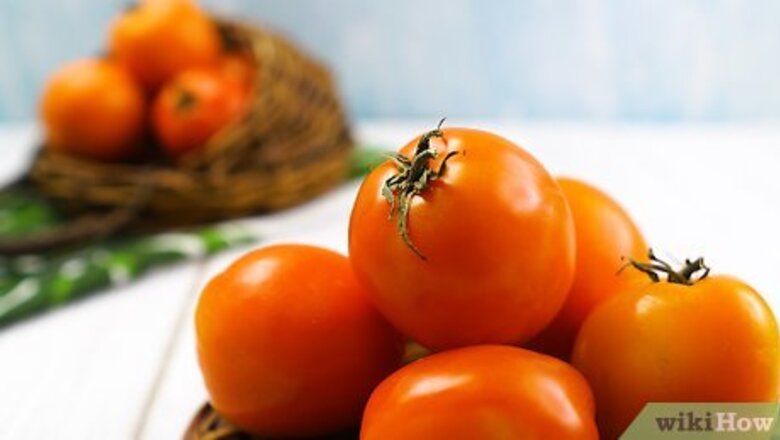
views
If you have an abundance of tomatoes at the end of the growing season, consider turning a few into tomato juice. If you have enough juice left over, preserve it in jars so you can enjoy the taste of summer's bounty all winter.
If you don't have fresh tomatoes available, you can also make tomato juice from tomato paste.
Making Juice from Fresh Tomatoes
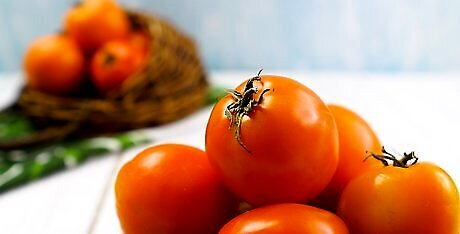
Choose ripe, juicy tomatoes. The best tomatoes to use for making juice are ripe heirloom tomatoes that taste delicious raw. If a slice of the tomato has great flavor and texture, the juice will come out tasting great, too. Look for tomatoes at the peak of tomato season at your local produce market or farmer's market. Keep in mind that you should be looking for juicy, sandwich or salad tomatoes, rather than paste tomatoes. Organic tomatoes are better to use than commercially-grown tomatoes that use pesticides. You don't want to be able to taste chemicals in your juice. You can choose one variety or a combination. Early Girl and Big Boy varieties produce more juice, while Roma tomatoes produce thicker juice (if using Roma tomatoes (paste tomatoes), you may want to combine them with some other, juicier tomato varieties).
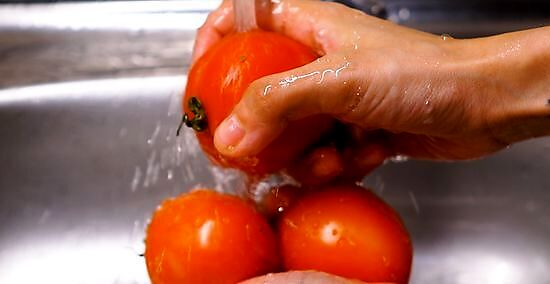
Wash your tomatoes. Rinse the tomatoes under running tap water and dry with a clean dish towel or paper towels. Simply rinsing the tomatoes should be enough to remove most dirt and bacteria.
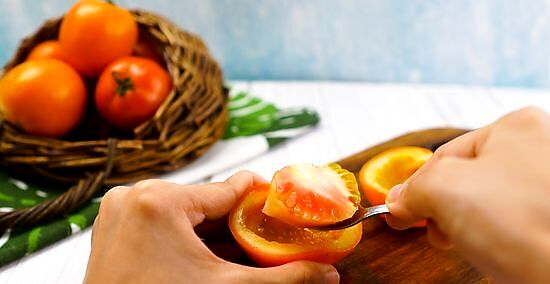
Core and cut the tomatoes into quarters. Slice the tomatoes open by cutting each one in half. Dig out the stem, removing any hard part that is not part of the flesh, and cut each half into two equal halves.
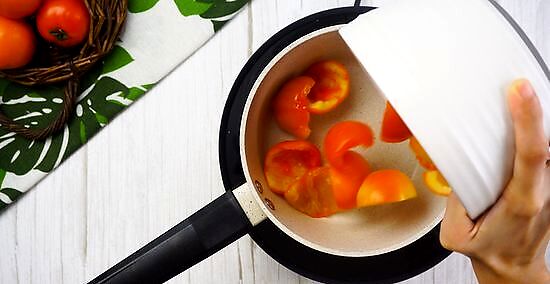
Fill a large, non-reactive pot with the chopped tomatoes. Use a stainless steel or porcelain pot rather than an aluminum one; aluminum will likely react with the acid in the tomatoes causing discoloring and possibly an off flavor.
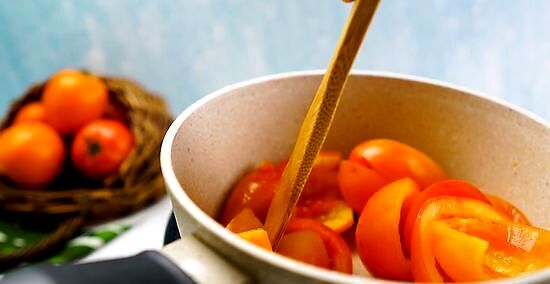
Press the juice from the tomatoes. Use a potato masher or a wooden spoon to press the tomatoes, releasing some of the juice. The pot should now be full of a mixture of tomato juice and other tomato parts. You want enough liquid in the pot to bring to a boil. If the mixture seems too dry to boil, add a few cups of water until you have enough liquid in the pot to boil.
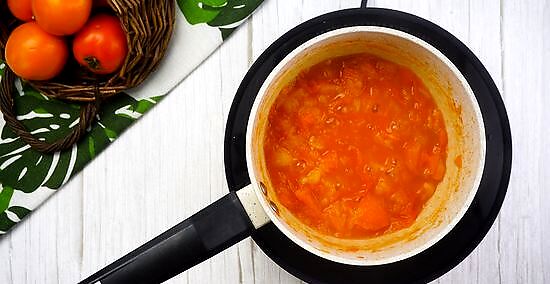
Bring the contents of the pot to a boil. Stir the tomatoes and tomato juice constantly, so the mixture doesn't burn. Keep cooking until the mixture is soft and soupy. This process should take about 25 to 30 minutes.
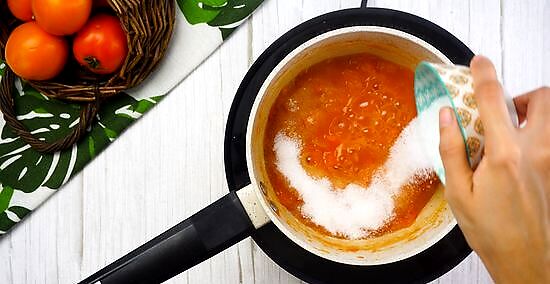
Add seasonings if you wish. Add a pinch of sugar, salt or other seasonings to flavor your tomato juice. The sweetness of the sugar helps cut back the acidity of the tomatoes. If you feel unsure about how much sugar, salt, or pepper to use, it is best to start with too little. You can do a taste test before you remove the tomatoes from the heat and add more seasoning, as necessary.
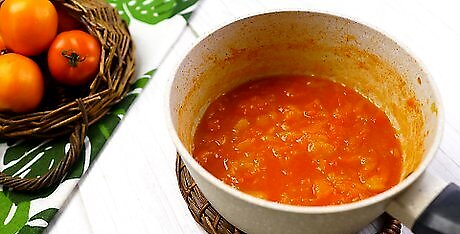
Remove the tomatoes from the stove and allow them to cool for a few minutes. You do not want them to return to room temperature, but they should be cool enough to reduce the risk of accidental burns.

Strain the solids from the juice. Place a sieve or wire mesh strainer over a large glass bowl. If using a strainer, select one with small gaps. Use a glass or plastic bowl, since metal bowls may react with the acid in the tomatoes. Gradually pour the cooled tomato mash through the sieve. Most of the tomato juice should flow through the holes. Shake the sieve occasionally to unclog the holes and allow more juice to drip into the bowl. Use a rubber spatula to squeeze the tomato mash against the bottom of the sieve. Pressing down on the mash will help squeeze out any juice that is still trapped inside the tomatoes. Discard the solids left behind inside the sieve. These solids will not have much, if any, culinary value.
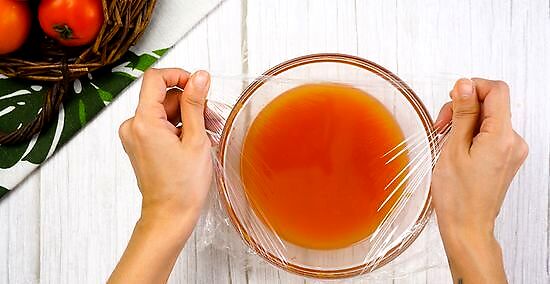
Cover and chill the juice in the refrigerator. Store it for at least 30 minutes before serving. Stir the juice well before drinking. Your tomato juice can last up to one week when kept refrigerated in a tightly-sealed container.
Making Juice from Tomato Paste
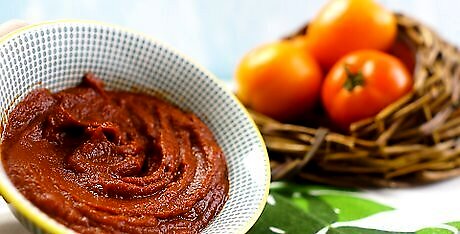
Open one 6-ounce (180 milliliter) can of tomato paste. Use a tomato paste that contains as few additional ingredients as possible. You can also use a 12-ounce (360 milliliter) can of tomato paste to create more juice, but you will also need to double the amount of water you use.
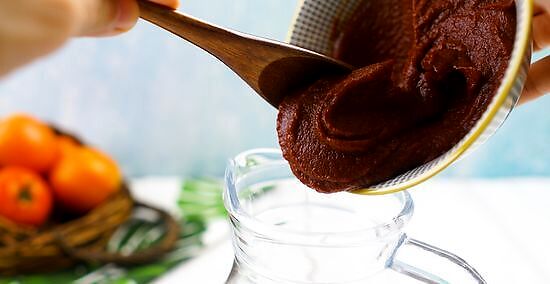
Scrape the tomato paste out of the can and into a medium-sized pitcher. Select a pitcher with a lid and sealable spout to preserve the juice as long as possible. If using a 12-ounce (360 milliliter) can of paste, use a large pitcher.
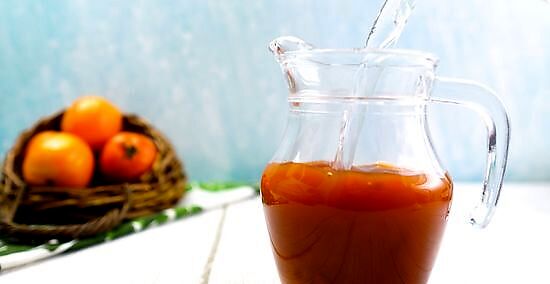
Fill the tomato paste can with water four times. Pour the water into the pitcher with the tomato paste. You can also measure out water using conventional measuring cups, but measuring it with the can will maintain the proportions well enough.

Stir the tomato juice and water together until well-blended. If possible, use a hand-held blender to make sure that both ingredients are thoroughly combined.
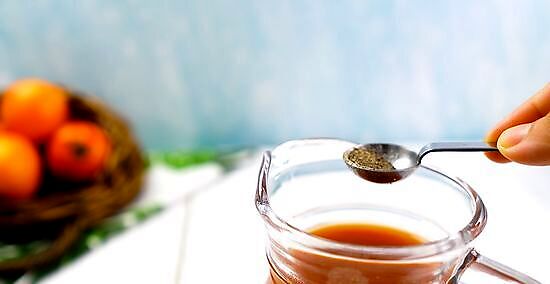
Add sugar, salt, and pepper, to taste. Stir the ingredients or blend with a hand-held blender until combined. If the tomato paste already included salt, omit it here.
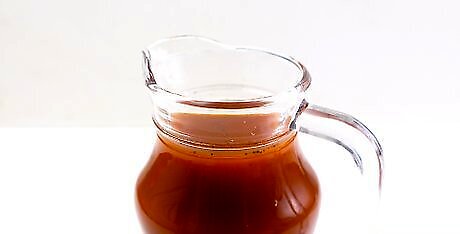
Store the juice in the refrigerator until ready to serve. Dispose of any unused juice after a week.
Canning Tomato Juice
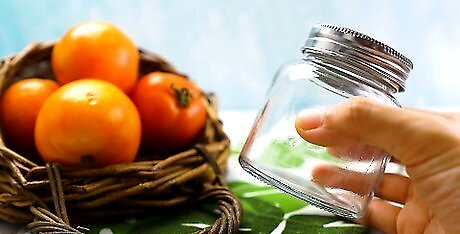
Get your equipment ready. To can tomato juice, you'll need quart-size (approximately 1 liter) mason jars with rings and new lids as well as a canner so you can create a sterile seal. It may also be helpful to get a jar lifter to make it easier to remove the hot jars from the canner when you're finished heating them. Note that it is not recommended to can tomato juice without using a canner. The tomato juice must be heated to a high temperature in order to kill bacteria and ensure the juice will be safe to drink when you open the jars. Either a boiling water canner, a dial-gauge pressure canner, or a weighted-gauge pressure canner will work.
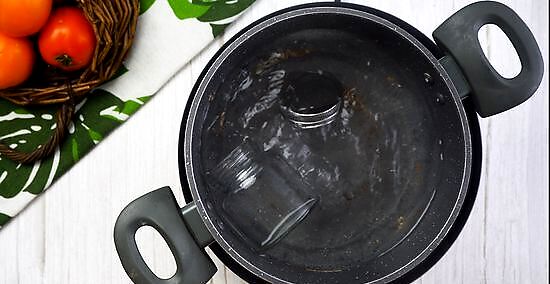
Sterilize the jars. You may either boil the jars for 5 minutes a piece, or sterilize them by running them through the dishwasher. Set them out on a clean dishcloth to prepare them for filling.
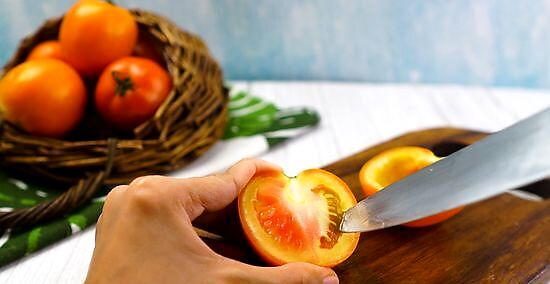
Prepare fresh tomato juice. If you're going to the trouble of canning juice, it's better to make fresh juice than to can juice you made using tomato paste. Make enough juice to fill up one or more quart jars, keeping in mind that you'll need to leave ⁄2 inch (1.3 cm) of headspace at the top of each jar.
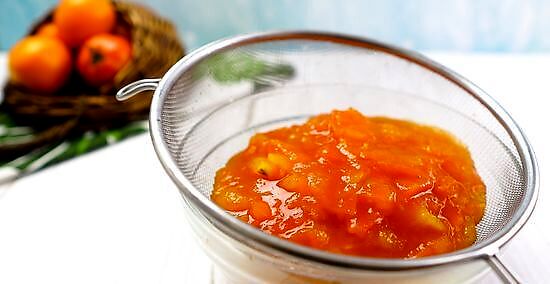
Strain out the pulp, skins, and seeds.
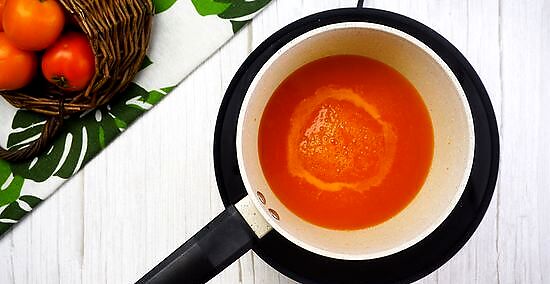
Boil the juice for 10 minutes. Boiling the juice for 10 minutes kills bacteria in preparation for canning. At this time, you may take one of the following optional measures to further preserve the juice: Add lemon juice or vinegar. The acidity of lemon juice and vinegar helps preserve the tomato juice. Add one teaspoon per jar. Salt. Salt acts as a preservative as well, and if you wish to use it, add one teaspoon for each quart. Keep in mind that salt will alter the flavor of the juice.
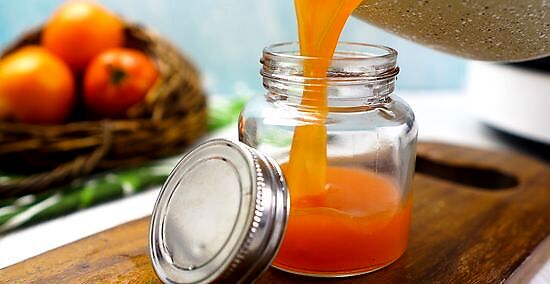
Pour the juice into the jars. Leave ⁄2 inch (1.3 cm) of headspace at the top of each jar. Place the lids on the jars and tighten the rings.
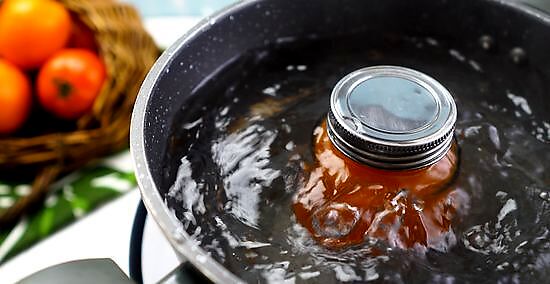
Place the jars in the canner and heat them. Follow the operating instructions for your particular type of canner. The standard heating time is between 25 and 35 minutes. When the process is complete, remove the jars and allow them to cool, undisturbed, for 24 hours.
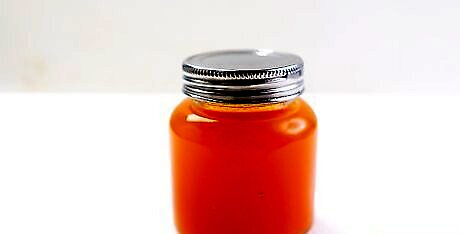
Store your jars of tomato juice in a cool, dry place.


















Comments
0 comment